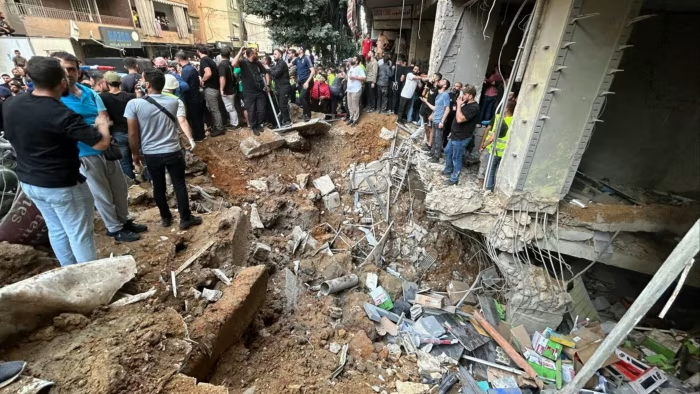According to Syrian state media, Israeli airstrikes on Wednesday attacked residential structures and an industrial sector in the historic Syrian town of Palmyra, killing at least 36 people and injuring 50 more.
The attacks, which took place at around 1:30 pm local time (10:30 GMT), devastated a large area and devastated many families. Syria’s state-run Sana news agency quoted a military source who said the attack came from the south, near the Jordanian border. The source added that the airstrikes inflicted “significant material damage” on the area.
While Syrian officials reported civilian casualties, a UK-based monitoring group offered a different account. The Syrian Observatory for Human Rights (SOHR), which relies on sources within Syria, said the strikes targeted a weapons depot and other locations connected to Iran-backed militias. According to the group, a total of 68 people were killed, including 42 Syrian fighters and 22 foreign nationals, mostly Iraqi militants and four members of Lebanon’s Hezbollah. Families of militia fighters were reportedly living in the targeted areas.
The SOHR also reported that one of the strikes hit a meeting of senior leaders from various Iran-backed militia groups, including members of the Iraqi group Nujaba and Hezbollah.
According to the usual policy, the Israeli military also refused to comment on the operation. Yet, Israel has previously also acknowledged hundreds of airstrikes in Syria over many years, against what it calls Iranian military targets and weapons shipments to Hezbollah.
The timing of these strikes has not gone unnoticed. By the time of the October 2023 war in Gaza, cross-border operations by Israel in Syria have allegedly increased significantly, with many efforts directly or indirectly tied to Hezbollah and other actors conducting attacks into northern Israel from Lebanon and Syria.
Videos and pictures posted on social networks gave a harrowing view of the aftermath in Palmyra. Heavy columns of black smoke filled the air while residents rushed to try and save victims, and examine the damage.
“We heard a loud explosion, and then everything shook. When we came out, there was fire everywhere. People were screaming, running… some of them were carrying injured children.”
The al-Jamiya neighborhood, which houses families of Iran-backed fighters, was one of the hardest-hit areas, according to SOHR. Two strikes reportedly targeted this neighbourhood, including a weapons depot close to the industrial zone.
In the vicinity, militia commanders were apparently convening when another strike occurred. As additional bodies were found, the SOHR updated the death toll from the initial 41 to 68.
Growing Tensions in the Area
Israeli airstrikes in Syria have turned fatal on many occasions in recent weeks. Just last Thursday, Israeli forces carried out several airstrikes in the capital, Damascus, killing 15 people. At the time, the Israeli military claimed it was targeting “terrorist infrastructure sites” belonging to the Palestinian Islamic Jihad group.
A day earlier, Israeli jets reportedly struck smuggling routes between Syria and Lebanon, which, according to Israeli officials, are used to transport weapons from Iran to Hezbollah.
With Israel stepping up its attacks on what it perceives as security concerns, these regular strikes underscore the rising tensions throughout the region.
Known for its historic remains and UNESCO World Heritage Site designation, Palmyra has endured a great deal of destruction throughout the years. During Syria’s civil war, the town was captured by the Islamic State group, which destroyed several of its historic landmarks. The scars of that conflict still linger, and Wednesday’s attack has only deepened the suffering of the local population.
One local resident lamented, “We have already lost so much. “To begin with, it was war… then Daesh (ISIS), and now this. How much longer can we take?”
In the wake of these developments, concerns are being expressed due to the rising number of fatalities. There is no need to reiterate how Israel has always presented its justification for these actions as acts carried out in advance of an external threat posed by Iran and its proxies. Still, the casualties and destruction of civilian populations cannot be overlooked.
For the residents of Palmyra, the current situation is primarily one of damage control – disposing of corpses, providing medical assistance to the wounded, and seeking means to piece back their lives. However, as the situation in the region remains precarious, many believe that this marks only the opening of a new and dangerous phase in their already turbulent existence.








